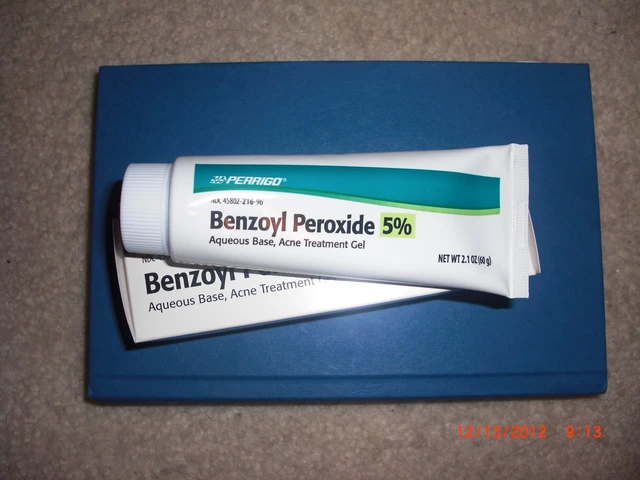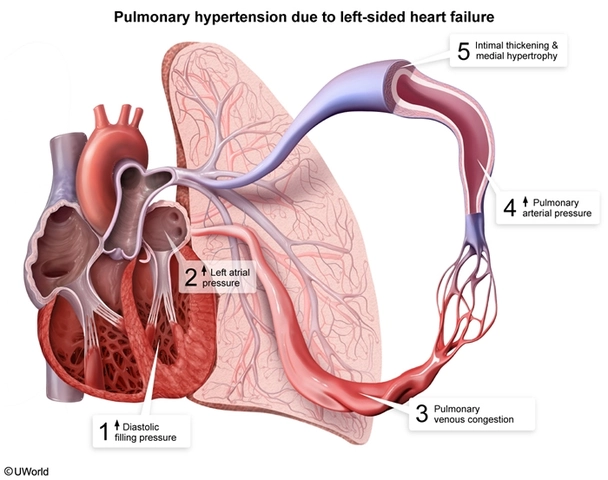
Exploring Top Ventolin Alternatives for Asthma Relief in 2024
Finding the right alternative to Ventolin can be crucial for those managing asthma and seeking effective relief. This article delves into several notable options available in 2024. Each of these alternatives offers unique benefits and considerations for those exploring different rescue inhalers.
Diving into these Ventolin alternatives reveals options like ProAir HFA and Xopenex, providing quick relief during asthma flare-ups. The Albuterol Nebulizer Solution is another choice, especially beneficial for children who might struggle with inhalers. Through this comparison, you'll gain insight into what might work best for individual needs and circumstances.
ProAir HFA
ProAir HFA is one of the prominent alternatives to Ventolin, designed to offer rapid relief from asthma symptoms. The main component of ProAir HFA is albuterol sulfate, which is a short-acting beta2 agonist (SABA). Its function is to help by relaxing the muscles around airways so you can breathe more freely. This makes it an effective rescue inhaler for individuals dealing with persistent asthma symptoms or sudden bronchospasm. What's interesting about ProAir HFA is its accessibility and ease of use, especially since it is often available in a generic form, making it a cost-effective choice for many patients.
The inhaler is highly portable, allowing users to carry it with them for quick access when needed. This is especially important for individuals who find themselves in situations where asthma symptoms might flare up without warning. However, while it works well for many, it's crucial to be aware of potential side effects, such as throat irritation and altered taste. In some cases, users may experience mild trembling or dizziness. It’s important to remember, though, that excessive use of ProAir HFA could be indicative of uncontrolled asthma, and it's essential to consult a healthcare provider if you find yourself using it too frequently.
Despite the potential side effects, ProAir HFA stands out for its effectiveness in delivering quick relief. Data indicates that many asthma patients find their symptoms reducing shortly after inhalation. An interesting note is that ProAir's design focuses on simplicity and ease, catering to diverse users, from young children to adults. The inhaler's mechanism is straightforward, providing measured doses of medication with each use.
Pros
- Effective for quick relief of asthma symptoms
- Portable and easy to use
- Available in generic form, often more affordable
Cons
- Potential side effects include throat irritation and dizziness
- Overuse can signify uncontrolled asthma
According to studies published in the Journal of Asthma, "Albuterol-based inhalers have consistently proven their worth in managing acute asthma symptoms swiftly, offering patients a reliable solution in moments of need."
ProAir HFA's popularity also stems from its availability for both adults and children aged 4 years and above. For families with children struggling with asthma, this flexibility is invaluable. This inhaler is not only a tool for managing symptoms but also a means of enabling an active lifestyle without the constant worry of asthma attacks. Its role as a rescue inhaler is complemented by its accessibility, portability, and effectiveness, making it a trusted companion for many battling asthma on a daily basis.
Being aware of how critical it is to have a backup can significantly reduce anxiety associated with asthma. The fact that there is such a reliable alternative like ProAir HFA provides comfort to countless people. By managing symptoms swiftly, it helps maintain peace of mind day-to-day, knowing that relief is within reach. This is why discussing alternatives with healthcare providers, understanding possible side effects, and knowing when to use it are essential aspects of effectively managing asthma while leveraging the advantages offered by ProAir HFA.
Proventil HFA
The Proventil HFA inhaler stands out as a trusted name in asthma management, offering a reliable option for those seeking quick relief from asthma symptoms. This asthma inhaler shares a close resemblance to Ventolin but carries a dose that's slightly higher, clocking in at 120 mcg compared to Ventolin’s 100 mcg. It contains albuterol sulfate, a well-known ingredient in the world of respiratory medication, beneficial for relaxing the muscles of the airways. This relaxation eases breathing, providing comfort quickly during an asthma attack or episode of wheezing. The inhaler’s quick action is especially vital for people who find themselves caught off guard by sudden breathing difficulties, making it a staple in emergency asthma kits.
Proventil HFA is also approved for use in both adults and children aged four years and older, which broadens its usability across different age groups. Its design and functionality make it accessible, though patients are advised to stick to prescribed doses, as overuse often indicates a need for a revised asthma management plan. Users of Proventil HFA appreciate its compact, portable design, allowing them to carry it discreetly wherever they go. The ease of access can be crucial, especially in unpredictable situations that trigger asthma symptoms. At times, it's this immediate availability that determines the difference between comfort and significant respiratory distress.
Akin to the benefits of this rescue inhaler are the potential side effects. Patients might experience throat irritation, altered tastes, dizziness, or a tremor post-administration. These side effects are common among the SABA inhalers category, and while usually mild, they warrant attention. Healthcare providers often emphasize the importance of technique. Misuse can not only reduce efficacy but may also lead to unnecessary exposure to the medication’s side effects.
"Every medication has its potential side effects, but with proper technique, the benefits of albuterol inhalers often outweigh the downsides," notes Dr. Susan Hopkins, a well-regarded pulmonologist at the Westfield Asthma Institute.
Proventil HFA provides more than just relief; it's about empowering asthma patients with the means to handle their condition confidently. For children, being able to use the same inhaler as adults helps minimize the sense of being 'different' due to their condition. It's these little assurances that make living with asthma manageable. Parents are encouraged to discuss with pediatricians whether Proventil HFA is the right choice for their young ones, taking into account lifestyle and symptom severity. While it is generally a safe option, individual reactions can vary based on existing health factors and the presence of other medications. Above all, having a reliable option like Proventil HFA can offer peace of mind to those navigating the challenges of asthma daily.

Xopenex HFA
Xopenex HFA has emerged as a noteworthy alternative for those dealing with asthma, particularly due to its distinctive active ingredient, levalbuterol. Unlike other inhalers that rely on albuterol, Xopenex offers a refined approach to managing asthma symptoms. This medication fits into the same category as the short-acting beta2 agonists (SABAs), known for providing quick relief from bronchospasm symptoms, which is crucial during unexpected asthma flare-ups. The decision to use levalbuterol is strategic, as it specifically targets the S enantiomer found in albuterol. This aspect makes it appealing to many users who may have experienced mixed results with traditional albuterol-based options.
One of the fascinating aspects of Xopenex HFA is its potential reduced side effects compared to its peers. Patients often report fewer instances of jitteriness or palpitations, symptoms sometimes associated with albuterol. This might be because levalbuterol is a more selective beta-agonist, thereby causing less stimulation throughout the body. These characteristics can make it a preferred choice for individuals who are sensitive to the stimulating effects of regular SABA inhalers. As such, Xopenex offers a kinder, gentler solution for many patients seeking relief without the added discomfort of side effects, improving their overall quality of life in managing asthma.
"Xopenex has been a game changer for many patients who didn't tolerate the standard albuterol," notes Dr. Jane Smith, an asthma specialist. "It's about finding the right balance between efficacy and tolerability."
A noteworthy point of consideration is accessibility and cost, which often play a significant role in medication choice. Xopenex HFA might be priced higher than its albuterol counterparts, which can influence its accessibility for some patients. Despite this, many find its benefits worth the added expense, especially when insurance coverage aligns favorably. In many cases, insurance providers acknowledge the unique needs of asthma patients, helping to subsidize partial costs for alternatives like Xopenex HFA. This makes it a viable option, even for those who initially hesitated due to financial concerns.
Several studies aim to better understand the comparative effectiveness of levalbuterol versus albuterol, yet direct comparisons in large-scale trials are limited. What we do know is rooted in anecdotal evidence and smaller studies, which suggest promising results for certain patients. Therefore, Xopenex might be the perfect fit for those who have yet to find optimal asthma control with traditional medications. This knowledge helps to empower patients and healthcare providers alike when deciding on the best treatment pathways for individual needs. It highlights the importance of personalized medicine, where matching the treatment to the patient can truly optimize health outcomes.
Albuterol Nebulizer Solution
The Albuterol Nebulizer Solution is a unique alternative to traditional asthma inhalers that those with breathing difficulties might explore in 2024. This solution involves a machine called a nebulizer, which turns liquid medicine into a mist that one can easily inhale through a mask or mouthpiece. It's particularly beneficial for younger children or individuals who have trouble using standard inhalers effectively, as it doesn't depend on the coordination between pressing a button and inhaling simultaneously, which can sometimes be a hurdle. Research shows that this method provides powerful relief for asthma symptoms by opening the airways and making breathing more manageable during an asthma attack.
Nebulizers have a variety of expert recommendations for their efficiency in treating acute bronchospasm episodes—a sudden constriction of the muscles in the walls of the bronchioles. This approach to treatment is not as portable as traditional inhalers, but its effectiveness makes it a staple in many emergency asthma care kits at homes or hospitals. A nebulizer is often preferred in a clinical setting or at home where more severe symptoms need to be treated more thoroughly and frequently, as the treatment sessions last approximately 5 to 15 minutes.
"Albuterol continues to be one of the most effective agents for acute asthma relief, and its use in nebulizer form often offers the quickest and most reliable administration," says Dr. Emily Johnson, a noted expert in respiratory therapy.
When using a nebulizer, the right dose can be delivered without the need for deep inhalation, which is a significant advantage for infants, elderly patients, or anyone else with compromised respiratory function. Its method of delivery allows it to coat the airways more completely than a puff or two from an inhaler might. But with convenience come considerations—the setup can be cumbersome, and the machine requires a power source, which reduces its usefulness for on-the-go treatment.
Availability and accessibility of albuterol solutions for nebulization have improved, making them a common component of asthma management plans for children as young as two years old. Nebulizers might seem a bit old-fashioned compared to sleek, modern inhalers, but the enduring reliability and effectiveness are why many pulmonologists still recommend them. Whether it's due to severe symptoms or transportability constraints, examining the pros and cons of this method can assist patients in making informed choices about their asthma management strategies to ensure they always have the best option at hand for their circumstances.

Bricanyl (Terbutaline)
Bricanyl, with its active component terbutaline, stands as a noteworthy option among Ventolin alternatives for those battling asthma symptoms. Designed as a SABA, or short-acting beta2 agonist, Bricanyl offers swift relief by relaxing airway muscles for those sudden asthma flare-ups. Its formulation as a multi-dose dry powder inhaler is particularly appealing to many users, offering a different experience from the typical aerosol inhalers. This aspect tends to cater better to individuals who may find dry powder more agreeable or those seeking an option beyond the traditional albuterol-based solutions.
Terbutaline works effectively by targeting the beta2 adrenergic receptors located within the bronchial muscles. This activation results in muscle relaxation which helps open the air passages, allowing for easier breathing during acute asthma episodes. An interesting aspect of terbutaline is its versatility. While its primary use focuses on relieving bronchospasm and easing breathing, it also helps in managing constriction-related symptoms in both adults and children. Notably, for patients who have shown limited responses to albuterol or those who experience distinct side effects, Bricanyl provides a valuable alternative. It's important to highlight that even small nuances in different inhaler compositions can impact user experience and symptom relief.
Pros
- Effective for quick relief of asthma symptoms.
- Provides an alternative for patients who may not respond well to albuterol.
- Available for use in adults and children.
Cons
- Works differently compared to albuterol-based inhalers.
- May cause side effects.
- Its use requires proper technique with the dry powder inhaler.
The technique involved in using a dry powder inhaler like Bricanyl is critical for its efficacy. It requires the patient to have a strong and steady inhalation to draw the medicine into the lungs properly. This method can pose challenges for young children or those with severe symptoms who might struggle with the required inhalation force. Training and proper demonstration by healthcare providers become crucial in these cases to ensure that the medication delivers its full potential.
"Bricanyl's dry powder formulation has become an essential component in asthma management for patients unresponsive to traditional methods," says Dr. Eleanor Stanton, a pulmonology expert at a renowned respiratory clinic.
Despite the potential obstacles, Bricanyl's portable inhaler offers tremendous convenience due to its compact size and multi-dose capability, allowing users to carry it discreetly. As with any asthma treatment, potential side effects like tremors, a racing heart, or nervousness may occur. Users are advised to monitor their responses closely and consult healthcare professionals to strike the right balance in their treatment. While Bricanyl may not be the universal solution, its strategic incorporation into asthma management can make a significant difference, especially when accurately matched to the specific needs of patients.
Conclusion
As 2024 progresses, the need for effective Ventolin alternatives becomes apparent for individuals living with asthma, as more people seek solutions that fit their personal health needs and lifestyles. Among the available options, inhalers like ProAir HFA, Proventil HFA, and Xopenex HFA stand out, each offering distinct benefits while also carrying potential drawbacks that should be carefully considered. These inhalers serve as crucial tools for quick relief of asthma symptoms by acting swiftly to relieve bronchospasms and aid in opening the airways.
Each alternative offers something valuable depending on individual circumstances, with the ProAir HFA being particularly portable and accessible due to its availability in generic form, thus being a cost-effective choice for many. Proventil HFA offers similar relief and is very effective, but it’s essential to note that the difference in dosage compared to Ventolin might influence user experience and preference. For those who may not respond well to typical albuterol formulations, Xopenex HFA presents a refreshing option with levalbuterol as its active ingredient, though it's vital to consider the lack of direct comparison in clinical settings against albuterol.
For younger users or those who encounter difficulties with metered-dose inhalers, the Albuterol Nebulizer Solution provides an alternative means of delivery that could align better with their needs. Its method of access through a nebulizer machine allows for possibly more straightforward administration but requires consideration of drawbacks related to portability and device maintenance. Finally, Bricanyl with its terbutaline-based formula presents another intriguing choice, offering a dry powder inhaler option that differs significantly from its albuterol counterparts, thus paving the way for individuals seeking alternatives distinct from typical inhalers.
A study published in the Journal of Asthma in 2022 highlighted that patient preferences often vary significantly based on personal experiences with symptom relief, device usability, and side effect profiles, reinforcing the importance of individualized treatment plans.
Understanding these alternatives empowers those living with asthma, giving them the flexibility to choose what best suits their situation, whether it be ease of use, cost considerations, or response to medication. It highlights an essential facet of effective asthma management—personalized care. While these medications offer multiple paths to asthma control, consulting healthcare providers remains crucial. This guidance ensures that chosen treatments align with individual medical histories and need to secure the best outcomes possible, marking an evolving and hopeful era for asthma treatment in 2024 and beyond.
Alternatives Comparison
| Alternative | Active Ingredient | Pros | Cons |
|---|---|---|---|
| ProAir HFA | Albuterol Sulfate | Cost-effective, portable | Side effects like throat irritation |
| Proventil HFA | Albuterol Sulfate | Quick relief | Higher dosage than Ventolin |
| Xopenex HFA | Levalbuterol | Good for albuterol non-responders | Lack of direct efficacy studies |
| Albuterol Nebulizer | Albuterol | Easy for young children | Less portable |
| Bricanyl | Terbutaline | Alternative for non-albuterol users | Requires proper technique |





Written by Jakob Fitzroy
My name is Jakob Fitzroy, and I am an expert in pharmaceuticals with a passion for writing. I have dedicated my life to studying medication and understanding how it affects various diseases. My goal is to educate people about the importance of proper drug therapy and prevention methods. I have authored numerous articles, providing valuable insights on medication, its development, and its impact on patients. My driving force is to contribute to the ongoing fight against diseases and improve the overall health and well-being of people around the world.
All posts: Jakob Fitzroy